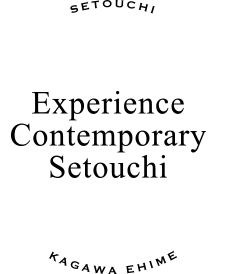
Japan's Oldest Hot Spring Resort, Included in the Michelin Guide
Dogo Hot Springs boast a history of 3,000 years and are considered to be Japan's oldest hot spring resort. Glorified as a famous hot spring spot since ancient times, Dogo Hot Springs are included in important historical and literary documents including the Nihon Shoki (Chronicles of Japan) and Man'yoshu ancient poetry collection. Dogo has been visited by important figures throughout history including the legendary Prince Shotoku, famous poet Kobayashi Issa, literary great Natsume Soseki, and celebrated poet Masaoka Shiki, among others. Dogo Onsen Honkan, a three-story wooden hot-spring bathing facility built in 1894, serves at a prominent symbol of this hot spring resort. The building has been officially designated as an Important Cultural Property and is widely viewed as the pinnacle of Meiji-period (1868–1912) Japanese architecture. Furthermore, it was the first public bath in Japan. In recent years, art festivals have been held using Dogo as a venue, and the events have proven popular among the younger generations. Dogo Hot Springs also earned a three-star rating in the prestigious Michelin Green Guide Japan and is visited by large numbers of tourists from abroad.
Japan's Only Cycling Route that Crosses an Entire Sea
The Nishiseto Expressway, more commonly known as the Shimanami Kaido, connects Imabari City (Ehime Prefecture) and Onomichi City (Hiroshima Prefecture) via elegant bridges linking islands scattered throughout the Seto Inland Sea. The route includes a cycling course extending about 70 kilometers (43 miles) in length, and provides the only way in Japan for cyclists to ride across an entire sea. The world-famous route is considered a mecca among cycling enthusiasts, and it also serves as the venue for international cycling competitions. There are 15 bicycle rental stations along the Shimanami Kaido, and users can return bikes at any location along the route even if it differs from the original rental location, making this course highly accessible to novice cyclists as well. Cycle from island to island as you feel the Setouchi breeze on your face and take in the sparkling sea and blue skies all around you!
Ehime the Citrus Fruit Kingdom: Highest Yields and Most Varieties in Japan
Thanks to its uniquely temperate climate and year-round sunny weather, as well as high-quality, nutrient-rich agricultural land and water sources, Ehime Prefecture is the ideal location for citrus fruit cultivation. The prefecture earned its nickname "Citrus Fruit Kingdom" because it has higher yields and more citrus fruit varieties than anywhere else in Japan, and customers can get their hands on fresh citrus produce nearly any time of the year. In addition to mandarin oranges (Citrus unshiu), whose production began near the end of the Edo Period (latter half of the 19th century) in Yoshida-cho, Uwajima City, the prefecture produces Iyo-kan, ponkan and other citrus varieties, with more than 40 in total. In recent years, Ehime has developed and released new, one-of-a-kind citrus varieties including Beni Madonna, Kanpei, Himenotsuki and others, which have gained widespread popularity as high-end gifts.






 Explore Local Cuisine and Restaurants
Setouchi offers a rich array of different flavors to enjoy. Any visitor to the region should try Sanuki udon noodles, a widely loved favorite of Kagawa Prefecture locals—stop by the many different restaurants to compare their tastes! And don't forget Ehime Prefecture's two distinct styles of tai-meshi, a dish of sea bream cooked with rice. Savor unique culinary cultures all throughout Setouchi!
Explore Local Cuisine and Restaurants
Setouchi offers a rich array of different flavors to enjoy. Any visitor to the region should try Sanuki udon noodles, a widely loved favorite of Kagawa Prefecture locals—stop by the many different restaurants to compare their tastes! And don't forget Ehime Prefecture's two distinct styles of tai-meshi, a dish of sea bream cooked with rice. Savor unique culinary cultures all throughout Setouchi!


 Stunning Seaside, Island and Mountain Scenery
Setouchi's coastline stretches east to west for 450 kilometers (280 miles), and the sea is filled with more than 3,000 islands of all sizes, making for some truly remarkable ocean scenery. All of this is set against the backdrop of Shikoku's mountains, which include Mount Ishizuchi, the highest peak in Western Japan. Kick back and enjoy Setouchi's richly varied, tranquil natural scenery.
Stunning Seaside, Island and Mountain Scenery
Setouchi's coastline stretches east to west for 450 kilometers (280 miles), and the sea is filled with more than 3,000 islands of all sizes, making for some truly remarkable ocean scenery. All of this is set against the backdrop of Shikoku's mountains, which include Mount Ishizuchi, the highest peak in Western Japan. Kick back and enjoy Setouchi's richly varied, tranquil natural scenery.



















